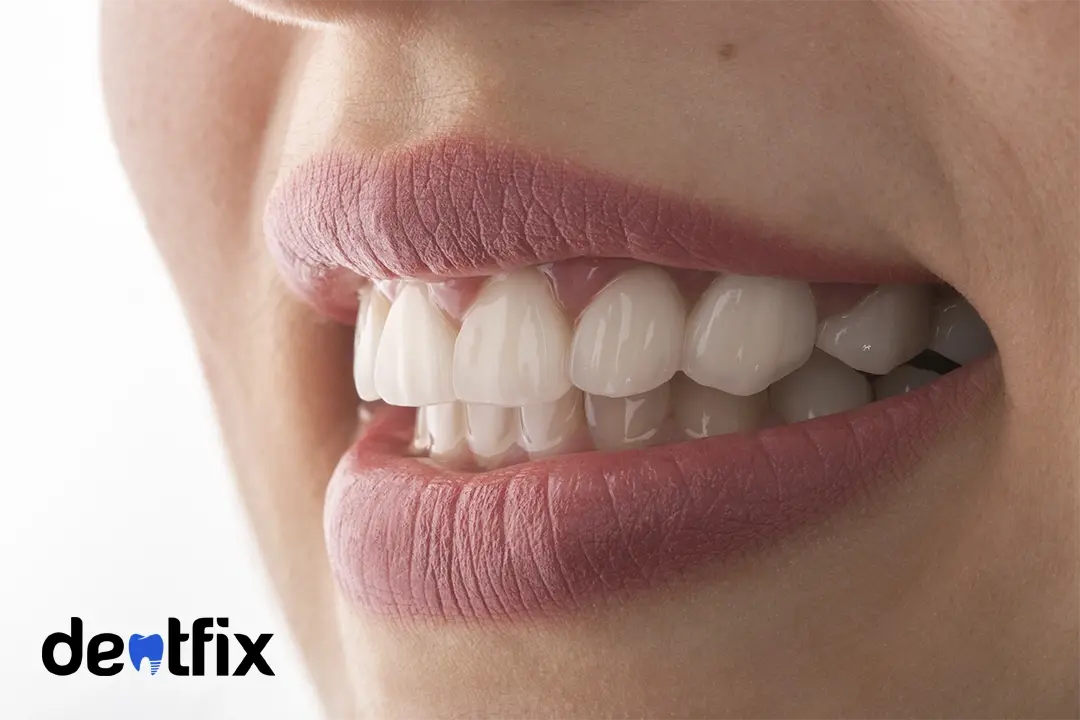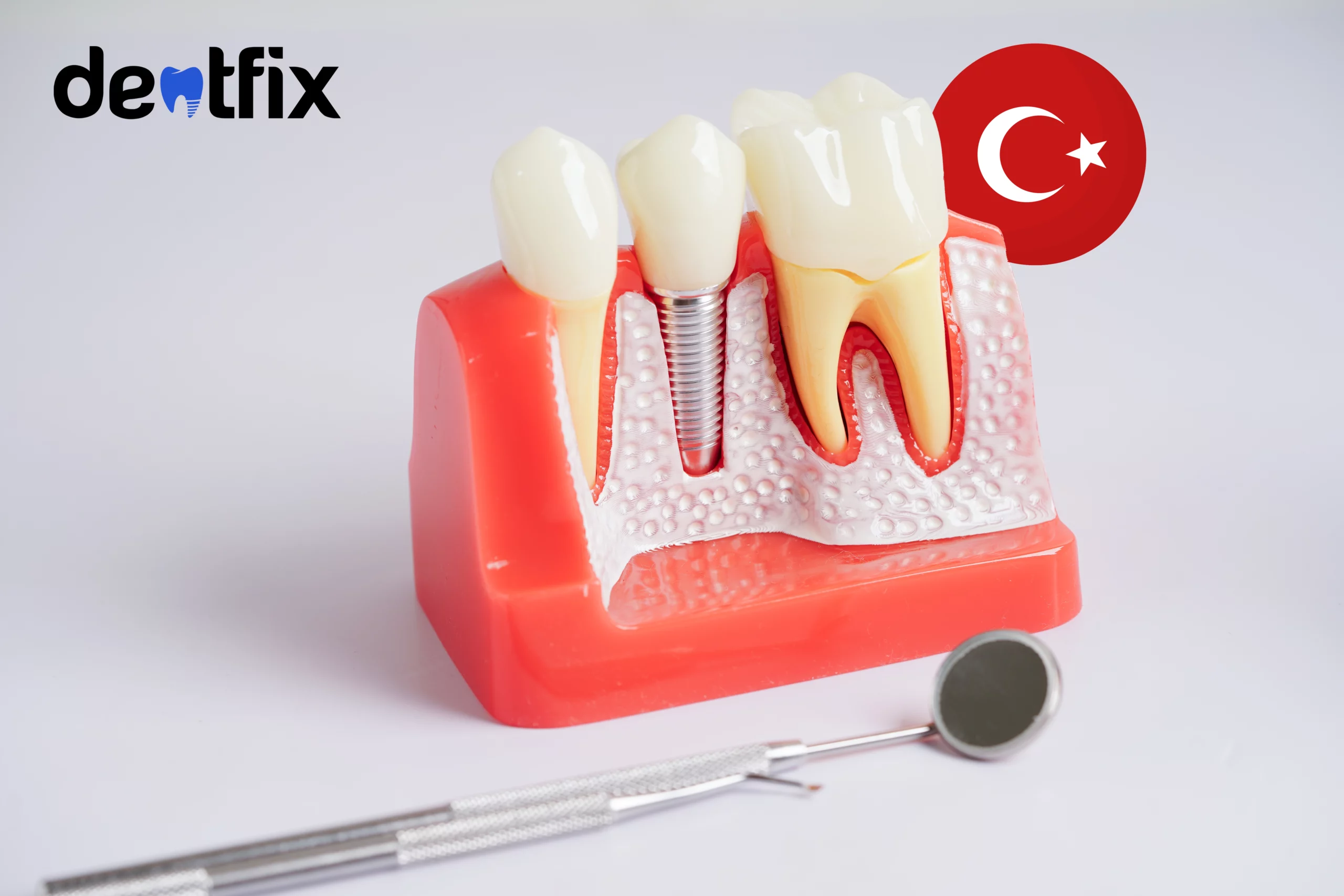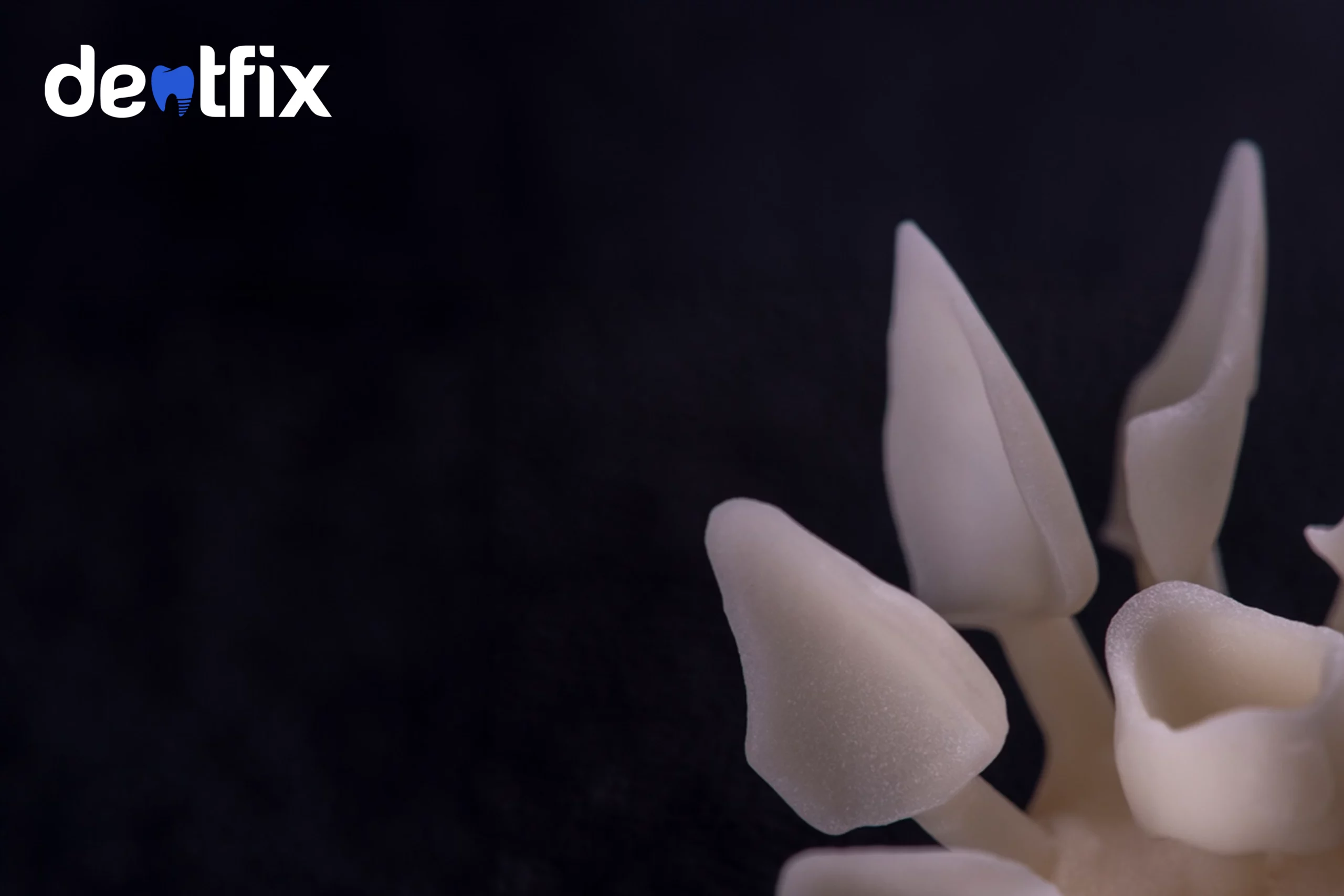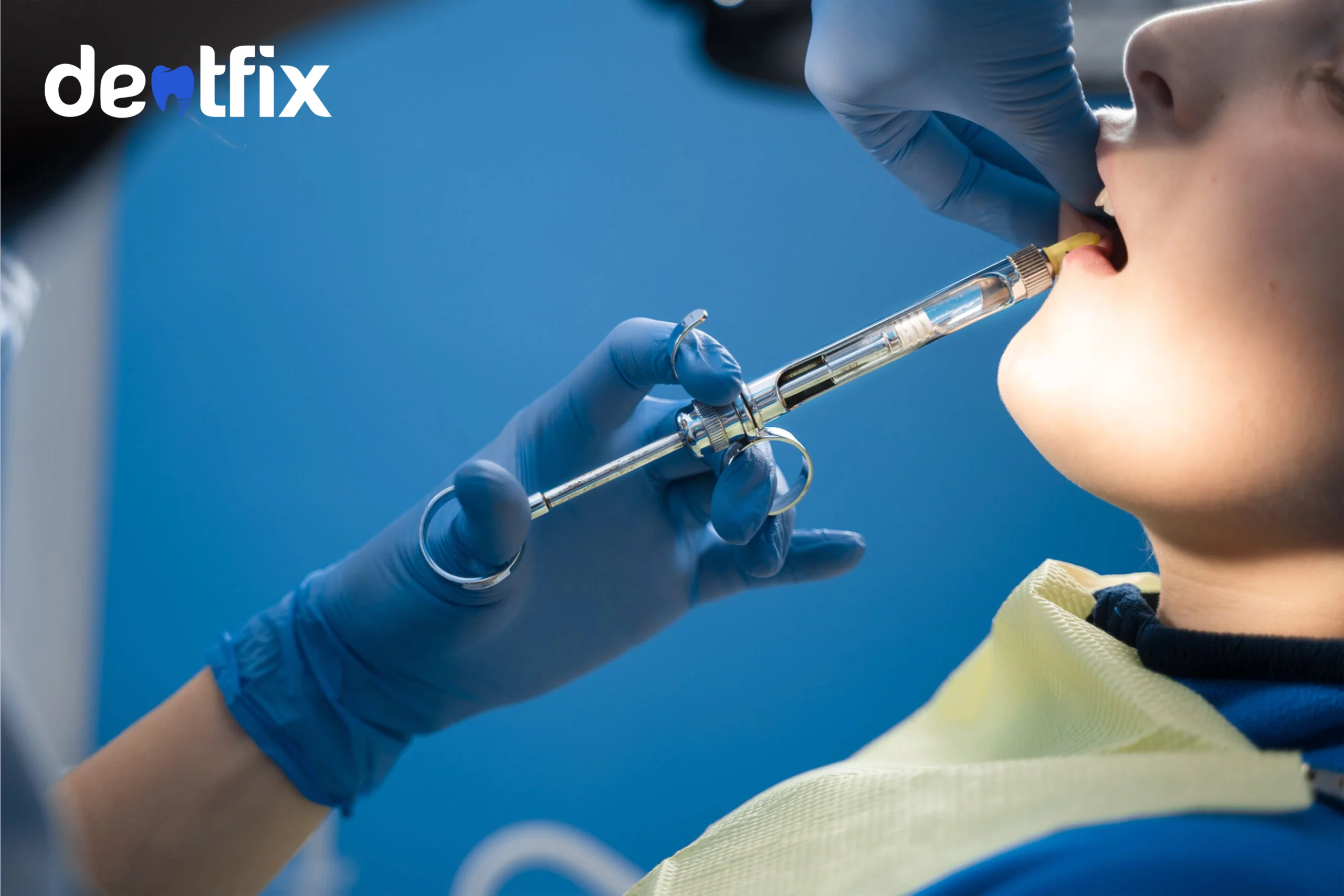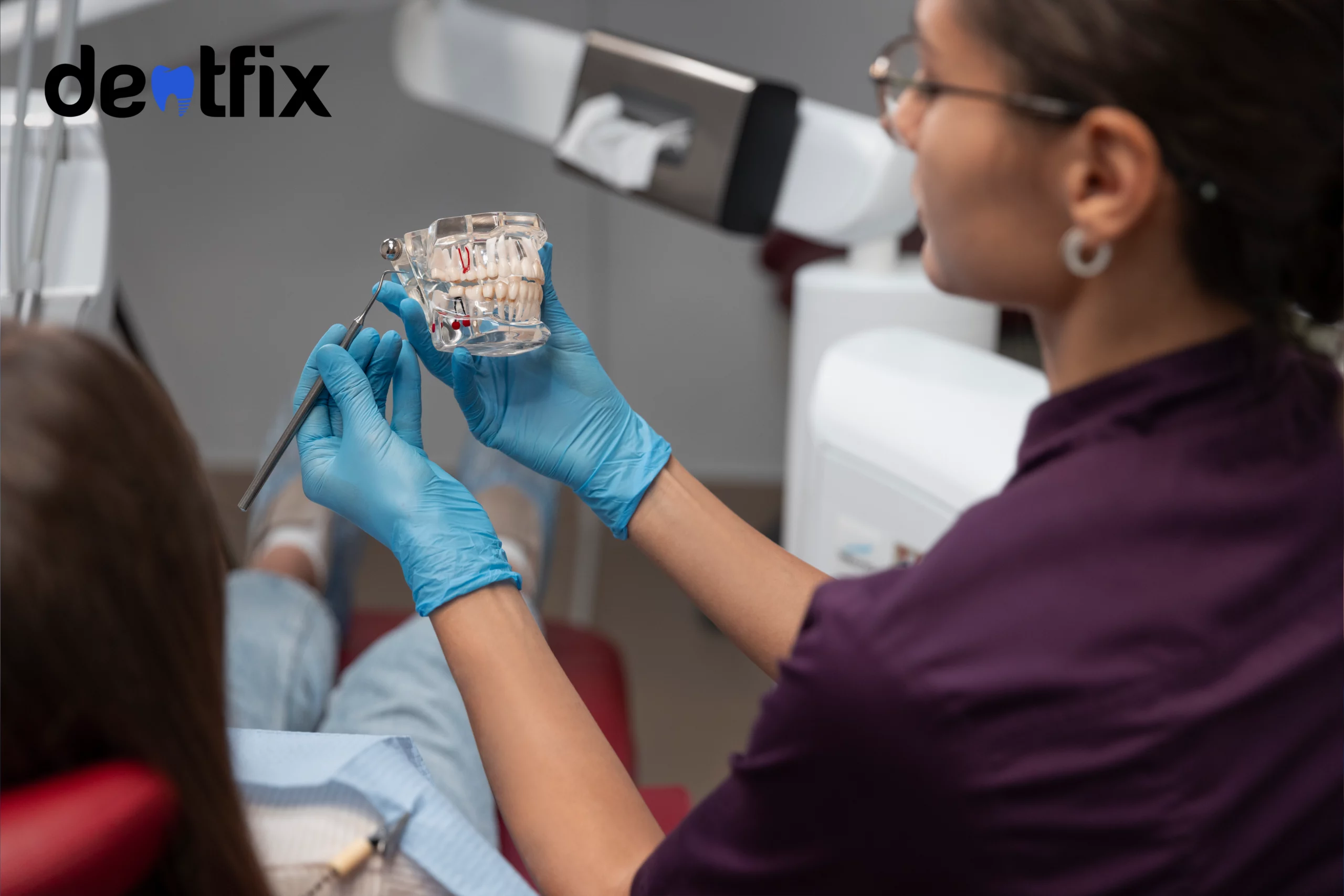Well, obviously not a burger. If you recently went through tooth extraction, you must know what to eat after tooth extraction. Your oral hygiene and diet play a big role in the healing process of your teeth after the extraction. Okay, maybe you have plans about what to eat or you wake up with an appetite for some junk food. Sorry, but it’s better to avoid such stuff. Seems not fair, huh?
Everybody deserves a food meal after a medical operation, like the doctor’s lollipop. But if you act careless about what to eat after tooth extraction, you have to keep in mind that there is a risk of bone and gum infection. In many cases, osteomyelitis also occurs – a post-op complication in which the infection affects the underlying bone.
Two main reasons why tooth extraction happens are tooth decay and wisdom tooth pain. Wisdom teeth removal leads to changes in the way you chew so altering your food choices is also important. This article contains all you need to know about how to take care of your teeth after extraction and what kind of diet to follow.
What to eat after wisdom tooth extraction?
A real pain in the back. The inevitable suffering that haunts many people for the best part of their lives. Wisdom teeth! They are also called the third molars. No matter what you call them they can cause a lot of pain. As an evolutionary step, this suffering is on our shoulders. And for many people, the only solution is extraction.
The most common advice from dentists is to consume a soft-food diet that is easy on the teeth as well as one’s stomach.
Keep in mind that since your gum tissue is healing, chewing may be hard, so soft food is an excellent solution. Furthermore, due to bite alterations, your food may not break enough for easy digestion. For easy digestion, you can incorporate certain soft but nutritious foods.
The first 24-48 hours are crucial during the recovery period. It is important to be extra cautious during this time and consume liquid or soft foods. Smoothies, shakes, pureed food, or mashed food are great during this period. Slowly and steadily you can move on to having solid foods but make sure to avoid hard and sticky foods.
Now let’s see what is the best thing to eat after tooth extraction. Keep an eye on your diet until a month at least or until the surgical site is fully healed.
Moving on we are going to discuss the different soft yet healthy foods you can try for a faster recovery after wisdom teeth removal or general extraction.
What to eat after tooth extraction and bone graft?
Sometimes after extraction for implants, bone grafting is also necessary to lift the receding bone. If you are currently going through something like this, your diet again is of utmost importance. In both cases, whether it is a normal tooth extraction or bone graft, a soft-food diet is your best bet to protect your teeth and newly grafted bone material. Actually what you have to eat is similar to normal tooth extraction. Let’s see what you can eat:
Foods after tooth extraction: Special recipes for you
Here is a list of foods to eat after tooth extraction for each meal of the day:
For breakfast:
- Blended oatmeal with banana
- Scrambled or boiled eggs
- Avocado smoothie
- Banana and Greek yogurt smoothie
Blended oatmeal with bananas
Oats are not only easy on the stomach but are full of fiber and create a scrumptious meal with milk (full or skimmed). Blend them in a grinder into powder form so there is no need to chew. To make it more nutritious and delicious, you can add mashed bananas to the mix. Moreover, grounded nuts also make the taste yummier and upgrade the nutritional value.
We believe with oatmeal one can experiment endlessly, especially after a sensitive procedure like tooth extraction. It not only has countless health benefits but is easy to prepare and digest.
Scrambled or boiled eggs
It is among breakfast staples and nearly no one can say no to it. There is nothing better than scrambled, creamy soft eggs for breakfast. Especially if you are going through that horrid period of recovery after extraction. Similarly, boiled eggs are great for breakfast if you want something soft, easy to digest, and full of protein. Avoid that much-tempting toast with your eggs for faster recovery of the surgical site. You can also add cottage cheese to your scrambled eggs because it is not only healthy but easy to chew.
Avocado Smoothie
Smoothies are great if you want something uber-healthy, and easy on the stomach. They are particularly great if you are currently recovering from oral surgery. Avocadoes are high in potassium and folate, both aid in healing wounds. For the prep of the smoothie, you can use one or half an avocado with Greek yogurt for a thick and filling smoothie. Add and blend seasonal fruit to elevate the nutritional value of the smoothie.
Banana and Greek yogurt smoothie
Easy to prepare and easy to digest, bananas are a great source of potassium. Bananas and Greek yogurt together create a soft healthy smoothie with many nutritional benefits. It does not take more than 5 mins to prepare this smoothie and yogurt is a great source of calcium. Calcium accelerates bone healing so it can speed up the recovery process of the underlying tooth bone.
For lunch:
- Mashed vegetables
- Hummus
- Pasta
- Ground chicken
- Quick smoothie with dates and seasonal fruit
Rice with mashed veggies
Consuming rice in limited portions is a great way of keeping yourself full for a long time. Adding some form of protein to the rice also works wonders. If you are concerned about what to eat after tooth extraction, mix rice with mashed veggies for a healthy lunch. To add protein, pick something soft yet nutritious such as fish or shredded chicken. Many people ask “Can I eat chicken after tooth extraction”, so the answer is yes.
Additionally, rice provides carbohydrates, and vegetables such as mashed carrots, cucumbers, or beetroots offer multiple vitamins/minerals.
Hummus
Hummus is not only finger-licking good but it has multiple health benefits. The soft and creamy consistency of hummus and various health advantages makes it ideal for diet post-extraction. Soft pita bread adds carbohydrates to the meal and helps you feel full longer. However, make sure not to bite and chew harshly while eating to avoid any post-extraction complications.
Pasta
Pasta is the fastest and easiest food to prepare after an extraction. If you want to opt for a healthier option then pick whole wheat pasta instead of regular pasta. Again you can add a protein of your choice for a complete meal. Make sure it is something not too hard on your teeth, such as fish or shredded chicken, or meat.
Ground chicken
Make sure your post-extraction diet contains a lot of protein. Consuming protein speeds up the recovery process. Ground chicken is nutritious as well as delicate to chew so it makes it perfect for a post-extraction diet. Take 2 to 3 chicken breasts and cut them into cubes. Put salt and pepper as per taste, and grind it in a food processor or grinder.
Quick smoothie with dates and seasonal fruit
During the healing period, one must consume foods and beverages that give energy. Smoothies are great to give you an energy boost. They are quick yet easy and do not require too many ingredients. All you need is milk or yogurt, protein powder (optional), 3 to 4 dates, a banana, or any other seasonal fruit. This smoothie is an excellent source of calcium, vitamin D, and potassium. It helps you charge up and recover fast post-extraction.
For dinner:
- Baked chicken (serve shredded)
- Lentil soup
- Baked sweet potato
- Baked Fish
- Mac & Cheese
Baked Chicken
While you recover from an extraction, make sure to have foods that help you heal faster. Any form of protein is good during this period but cook it in a way that makes it easy to digest also. Baking chicken is a great and healthy way of fulfilling your daily protein needs. Protein accelerates the healing of the body and thus one must consume it every day. If cooking is not one of your strong suits, don’t worry because this dish is fairly easy. All you need is an oven, chicken, and some condiments. Shredding the chicken makes it a lot easier to chew.
Chicken breasts are perfect for baking because you don’t have to remove any bones. Defrost and marinate the chicken with condiments, salt, pepper, red chili, etc. Leave it for at least 1 hour so that it absorbs the spices fully. Then use a baking brush or use gloves to put oil on the chicken so it turns out juicy and full of flavor. If you use medium-sized chicken breasts, it does not take more than 30 minutes to bake in the oven. If you are not sure if the chicken is ready and tender enough, use a thermometer. The ideal temperature is 75 C. For a full meal, you can add mashed potatoes to the mix.
Lentil Soup
Soups are ideal when one is recovering from dental extraction. They are light and healthy, particularly lentil soups. You can prepare it at home without much hassle. Soak lentils (red or yellow) for 2 or 3 hours in water. Put them in a cooker with water, add 1/2 tsp salt, 1/2 tsp black pepper, and 1/2 tsp crushed red pepper. Put it on heat until the lentils soften and turn into a soupy liquid.
Once the soup forms, turn the heat off and let it rest for a few minutes. Put the mixture in a grinder, add 1/4 cup of water, and grind it at medium speed. The result is a thick, creamy texture all set to serve and enjoy. You can also add vegetables to the mix while lentils are on heat such as boiled potatoes, eggplant, etc. For garnishing, you can use chopped parsley, and there you have a healthy yet delicious soup.
Baked Sweet Potato
The trick to feeling better and recovering faster is switching to healthier food alternatives. Instead of regular potatoes, try sweet potatoes because they are low in calories and delicious too. Once you mash or bake them, they become soft enough to have after extraction. At the same time, they are rich in potassium and make you feel full for a long time.
Baked Fish
Just because you are recovering from dental surgery doesn’t mean your food has to be boring and tasteless. Since soft food is preferable during this time, experiment with types of proteins. Instead of chicken or beef, go for fish. Fish is full of omega-3 fatty acids, iron, and other important vitamins/minerals. Rather than frying the fish, baking it oozes its natural oils much more. Fish filet is much more accessible than other types of fish.
Preheat the oven to 425 and prepare the seasoning mixture. Add 1 tbsp lemon juice, 2 tbsp melted butter, 1 or 2 garlic cloves, 1.5 tsp pepper, and salt according to taste. Either use a baking brush to lightly brush the mixture on the fish or immerse it in the mixture. Let it rest for at least an hour. Now place the fish inside the oven and leave it for 20-25 minutes. Take it out once the fish looks flaky or opaque.
Mac & Cheese
Although this dish is not the healthiest, however, sometimes all you need is comfort food, especially after dental surgery. After tooth extraction, mac and cheese is an easy and fast dish to prepare. All you need is a box of elbow macaroni, cheese, and other regular ingredients easy to find in a kitchen. Put the macaroni in a large pot and boil it until soft. Take a saucepan and melt a bit of butter, put 1/4 cup of flour, 1/2 tsp salt, and pepper. Slowly pour 2 cups of milk into the mixture and stir it until it is smooth. Now add 2 cups of cheddar cheese and stir it until the cheese melts. Pour the mixture into the macaroni while it is on low heat. It is now ready to serve.
Pick low-fat cheese and milk to make a healthy version of Mac & Cheese.
Here is a round-up of the foods to consume after extraction:
What not to eat after tooth extraction?
What to eat after extraction and what not to eat or drink after it are both crucial matters for a healthy and stable recovery. We already know hard and chewy foods may cause damage to the recovering area. It is crucial to know the foods to avoid while you recover so no complications occur.
Spicy foods
If you are a fan of spicy food, you may want to cut back on it after extraction. Not only is it bad for you generally but it creates certain serious problems after extraction. It irritates the stitches and causes sore gums. Consumption of spicy and acidic foods also leads to stomach problems such as GERD (gastroesophageal reflux disease), peptic ulcers, etc. Research suggests long-term effects of GERD on teeth include dental erosion and tooth wear.
Hard and sticky foods
After extraction, the most important thing is to leave the wound alone for at least 24 hours or so. Avoid consuming hard and sticky foods such as nuts, figs, candy, etc. Continue a diet free from such foods for at least 2 weeks after the surgery. A soft food diet leads to faster recovery as well as low chances of any post-op complications.
No alcohol or smoking
We know it is tempting for you to reach for that glass of red wine after surgery. However, it does more bad than good to you after dental surgery such as a tooth extraction. Alcohol may numb the pain for a while but in the long run, it does nothing but delays the healing process. It increases the risk of infection on the surgical site. The same possibility is there if you smoke after the extraction. It dehydrates the mouth and if you take a puff too hard, your stitches can open too. ‘Dry socket’ is another problem if you continue to smoke and have alcohol.
Avoid too cold or hot foods
The first two days after the surgery are crucial in the recovery process. Taking care of your diet also includes avoiding too hot or cold foods. If you already suffer from sensitivity issues, it is better to stay away from extreme temperatures. Instead, choose room temperature or lukewarm water or other liquids. Consuming too hot or cold foods leads to sore or irritated gums surrounding the affected area. Therefore, to avoid such post-op complications, one must be extra careful.
FAQs on diet after tooth extraction
Here are the queries we receive about food choices after tooth extraction. If you too are wondering “What can I eat after tooth extraction?”, this section is for you!
How to eat after tooth extraction?
We advise you to be gentle and careful when eating after tooth extraction. Eat from the teeth on the other side to avoid putting pressure on the operated site. To make the process easy to handle, we recommend consuming a soft-food diet in the next 2-3 weeks. The soft-food diet contains bananas, mashed potatoes, smoothies, cottage cheese, yogurt, fruit juices, etc. The key is to consume healthy and nutritious foods for smooth and consistent healing.
Why eat soft foods after tooth extraction?
Soft foods are appropriate after extraction because they are easy on the teeth when you chew. You avoid putting a lot of pressure on the teeth with soft food. With a soft-food diet, you heal faster and go back to normal eating habits once the extraction site fully heals.
When to start eating after tooth extraction?
You can resume eating after 24 hours of the surgery. You can consume soft foods immediately after the surgery but it is better to have smoothies or shakes. But never forget to avoid straw use. It creates a vacuum effect that can remove a blood clot. The reason why it’s better to have liquids in the first 24 hours is that you don’t put pressure on the teeth to chew. Chewing on hard foods, especially during this time can be dangerous and cause bleeding or infections.
When to eat solid foods after tooth extraction?
The first 48 hours are crucial in the healing process. Dentists recommend having liquids or soft foods during this phase. However, you can start having solid foods after 48 hours but make sure the food is soft and easy to chew.
What can I eat the day after tooth extraction?
After day 1, you must keep your diet light and soft. It is even better if you consume liquids such as healthy smoothies, shakes, or juices. You can use seasonal fruits along with Greek yogurt or milk to make a healthy fruit shake. Since your diet plays a huge role in the healing process, extra caution is the right thing to do. On day 1 after tooth extraction, you can also have ice cream for immediate relief from excruciating pain.
References:
Dundar A, Sengun A. Dental approach to erosive tooth wear in gastroesophageal reflux disease. Afr Health Sci. 2014;14(2):481-486.
